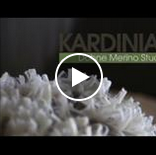Don’s Dohne switch pays
Fiona Myers | October 3, 2012 | Weekly Times
DON Mills was a Merino man. As a woolclasser who also ran a mixed farming operation, wool was in his blood.
He still loves the fibre, but he has traded his alliance to Dohnes, which now not only encompasses a commercial flock but also a stud operation.
Ironically, it was when a well-known known Merino breeder started breeding and selling Dohnes that Don decided to take a look.
“The first time I saw or heard of Dohnes was when Roseville Park (Dubbo) started breeding them,” he said.
“When a prominent stud looks at a different animal, I wanted to see what it was about.”
So began the relationship with Dohnes for the Mills, and more than a decade later, that relationship has blossomed.
Don had been running an operation in which the best of the Merinos were joined back to Merinos, and the older ewes or classed-out young breeders were joined to Border Leicesters.
But this system was “messy”, Don said.
“We had too many mobs of sheep and too many butts of wool (of different types) in the shearing shed,” he said.
“That’s why Dohnes, as a true self-replacing flock, rang the right bells.”
The first step to test the breed on their Coreen farm, north of Corowa in NSW, was to buy one ram – and at $4000 for a commercial sire, Don said they could afford to use only one.
He joined 100 Merino ewes to that one ram and got an 83 per cent weaning rate.
The balance of the same flock was joined to Merinos as normal, at a higher joining rate of 1.5 rams per 100 ewes, yet achieved just a 72 per cent weaning rate.
That first trial convinced Don Dohnes were right for his operation, and since then it’s been Dohnes joined over Merinos until the flock is now pure Dohne.
There have been compromises.
The Dohnes don’t cut as much wool, but the clip still averaged 924c/kg greasy last year for all wool – locks, bellies, pieces and fleece lines.
 That’s on the basis of cutting about 4.5kg/wool per head (including lambs) of 19.3-20.1 micron wool.
That’s on the basis of cutting about 4.5kg/wool per head (including lambs) of 19.3-20.1 micron wool.
But out of that same flock, the wether lambs averaged $140, turned off at 24kg-26kg carcass weight.
Those lambs are selling at no discount to more traditional prime lamb breeds, which Don said made the enterprise more viable than a Merino lamb which always suffered some sort of carcass price discount regardless of how good it was.
With the push of the industry towards slightly smaller lambs, Don is now considering selling the top cut of his wethers as suckers, marketing 25-30 per cent as young lambs.
The balance can then be shorn and sold later.
While the wool achieves good prices and the lambs, too, it’s the fertility where Don sees the greatest opportunity for profit.
One mob of mature stud ewes this year posted a 180 per cent lambing rate.
But, equally impressive, his commercial mixed-ages ewes have reared 125 per cent of lambs to ewes joined.
Don concedes some of this impressive lamb percentage is down to management.
“You have to make sure the ewes are in the right condition and weight to join,” he said.
“You have to be able to meet the high management requirements of a highly fertile flock, including satisfying nutritional requirements.
“But the Dohnes are better mothers too, and they rear the lambs they have, rather than walking away from one twin.”
He tests the breed though – joining ewes before they are 12 months to lamb down as 15-month-olds.
“We like to get these young ewes up to about 45kg liveweight and closer to 50kg if possible,” he said.
“The lambing percentage of these might be 50 per cent or 75 per cent, but it adds to total lambing numbers and we get productivity out of young ewes that normally wouldn’t earn you anything until a year later.
“Being able to join ewes that young certainly adds to the profitability of running the breed.”
The Mills crop about 450ha each year on top of their 1000 Dohne breeders and their stud sheep flock, and so the low management requirements of the Dohnes also suited them.
“We don’t have to mules and the sheep do well which is important,” Don said.
“We run the farm with tight labour inputs and the sheep have to fit in with what we are doing with cropping as well.
“I like to say that I am a sheep person who does a bit of cropping, not the other way around. My real love is livestock, but our country needs to be cropped – we don’t get the rain to support a big livestock operation with year round pastures. And the Dohnes have fitted into the system perfectly.”
Their Kardinia stud flock is another arm to their business, and Don said scrutiny of Dohne studs by accredited people ensured a level of integrity in the rams the breeders sold.
“This is a commercial breed even in the stud side and that is really appealing, both as a stud breeder and a commercial breeder of Dohnes,” Don said.
“You want the people you sell rams to to be profitable.
“We’ve done some rough sums and believe the Dohnes are earning us about $10 more for each breeding ewe.
“That’s convincing enough for us.”










